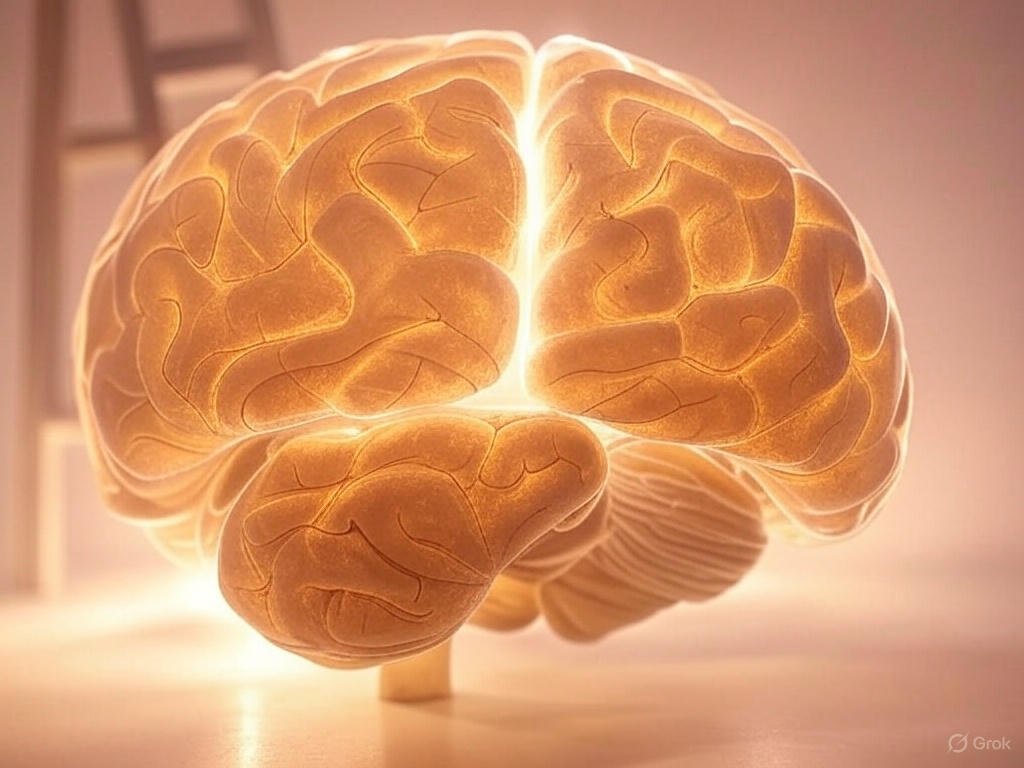Self-perfection—the drive to refine yourself, master skills, and align with your ideal self—is a powerful motivator. But it can also feel like chasing a horizon that keeps moving. For a blog on mental health and self-improvement, the neuroscience of self-perfection sheds light on why we strive, what holds us back, and how to pursue growth without burning out. Let’s explore how your brain fuels this quest and how to channel it for a balanced, fulfilling life.
The Brain’s Drive: Dopamine and the Reward Loop
Self-perfection taps the brain’s reward system, centered on the nucleus accumbens and ventral tegmental area (VTA). When you hit a milestone—like nailing a presentation—dopamine floods these areas, creating a feel-good rush. A 2020 Nature Neuroscience study showed dopamine spikes not just at success but during anticipation, driving you to chase the next goal. This loop fuels persistence but can trap you in “never enough” thinking if unchecked.
The prefrontal cortex (PFC) shapes this drive, setting long-term goals and envisioning your “better self.” A 2021 Journal of Cognitive Neuroscience study found the PFC’s medial region activates when imagining future success, like picturing a fitter you. But an overactive PFC can breed perfectionism, with a 2022 Psychological Medicine study linking it to rigid standards that stress the brain.
The Anterior Cingulate Cortex: The Inner Critic
The anterior cingulate cortex (ACC) acts as your brain’s error detector, flagging mistakes—like a typo in an email—and pushing you to improve. A 2019 Cerebral Cortex study showed ACC hyperactivity in perfectionists, driving relentless self-criticism. This can boost performance but risks mental health, as constant fault-finding spikes cortisol, per a 2020 Stress study, fueling anxiety or burnout.
The Default Mode Network: Crafting Your Ideal Self
The default mode network (DMN), active during self-reflection, constructs your sense of identity. A 2021 NeuroImagestudy found the DMN integrates past achievements and future aspirations, shaping your vision of a “perfect” self. But an overactive DMN, common in perfectionism, can trap you in comparison or rumination, as shown in a 2022 Frontiers in Psychiatry study. Balancing DMN activity with action-oriented PFC engagement is key to healthy striving.
The Pitfalls: Perfectionism’s Neural Toll
Perfectionism can hijack self-perfection’s benefits. An overactive amygdala, the fear center, amplifies dread of failure, per a 2020 Biological Psychiatry study, making every setback feel catastrophic. This triggers a stress response that clouds the PFC, stalling progress. Chronic perfectionism also dampens dopamine’s reward signal, with a 2023 Journal of Affective Disorders study linking it to anhedonia—losing joy in achievements.
Practical Steps to Pursue Healthy Self-Perfection
Neuroscience shows self-perfection can be a path to growth, not a trap. Here are five strategies to align your brain with balanced striving and mental health:
- Set Process Goals: Focus on effort, not outcomes—like “practice guitar 10 minutes daily” vs. “be a rockstar.” A 2021 Psychological Science study showed process goals boost dopamine without perfectionist pressure.
- Embrace “Good Enough”: Reframe mistakes as learning. A 2020 Journal of Positive Psychology study found self-compassion lowers ACC-driven criticism, easing stress. Celebrate progress, not flawlessness.
- Balance Reflection and Action: Limit DMN overthinking with tasks. A 2022 Neuroscience study showed alternating planning with doing—like journaling, then acting—optimizes PFC-DMN sync.
- Rest to Recharge: Overwork dulls dopamine. A 2023 Sleep study found 7–9 hours of sleep restores reward sensitivity, keeping you motivated. Schedule downtime guilt-free.
- Seek Feedback, Not Validation: External input fine-tunes the PFC’s goals. A 2021 Social Cognitive and Affective Neuroscience study showed constructive feedback strengthens neural flexibility. Ask mentors for honest insights.
Self-Perfection as a Journey, Not a Destination
The neuroscience of self-perfection reveals a brain wired to chase growth, fueled by dopamine’s spark and the PFC’s vision. But it also warns of perfectionism’s traps, where fear and criticism dim joy. By embracing progress over flawlessness, balancing reflection with action, and nurturing your brain’s resilience, you can pursue self-perfection as a path to fulfillment, not frustration. Your brain’s built to evolve—trust it to get better, one step at a time.
What’s one small way you’ll grow today? Your brain’s cheering for you.

Leave a Reply